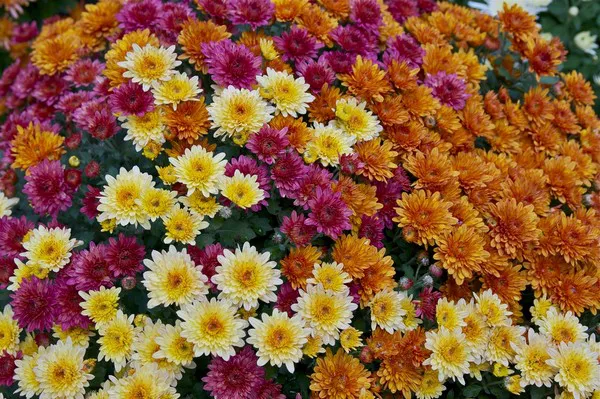Flowers have been used throughout history as symbols of various emotions, concepts, and ideas. They are often seen as tokens of love, friendship, or condolences. Among this rich tapestry of floral symbolism, certain flowers stand out for their association with the very essence of life itself.
The Lotus: A Symbol of Resilience and Enlightenment
In many Eastern cultures, the lotus flower holds deep significance and is often associated with life, purity, and enlightenment. The lotus grows in muddy, murky waters, but its pristine bloom emerges untouched by the surrounding muck, making it a symbol of purity and transcendence over adversity. In Hinduism and Buddhism, the lotus represents spiritual awakening and the path to enlightenment. It is often depicted as a seat for deities, showcasing its connection to life, creation, and the divine.
The Tree of Life: A Universal Symbol of Connection
While not a single flower, the Tree of Life represents the interconnectedness of all living things. This symbol can be found in various cultures and religions around the world. Often depicted as a tree with branches reaching up to the heavens and roots extending deep into the earth, it signifies the intricate relationship between all living beings and the cyclical nature of life. The Tree of Life symbolizes the unity of all creation, the continuity of existence, and the never-ending circle of life.
Daisy: Innocence and New Beginnings
The daisy, with its simple and unassuming appearance, is a powerful symbol of innocence and new beginnings. The flower’s white petals surrounding a bright yellow center give it a fresh, clean, and pure look. Daisies often appear in spring, signifying the renewal of life after the long, dormant winter months. This flower is seen as a reminder that life is full of opportunities for a fresh start, making it a popular choice for bouquets at weddings and celebrations of new life.
Sunflower: Vitality and Positivity
The sunflower’s vibrant and striking appearance makes it a symbol of vitality, positivity, and the life-giving power of the sun. These flowers, known for their ability to turn and face the sun, represent the pursuit of light, warmth, and growth. Sunflowers inspire feelings of happiness and optimism, making them a popular choice for expressing well-wishes and the celebration of life events. Their bright yellow petals evoke the radiance of life at its fullest.
The Red Rose: A Symbol of Passionate Life
While red roses are often associated with love, they also symbolize intense and passionate life experiences. The deep red hue represents not only romantic love but also the fiery zeal that characterizes life’s most significant moments. Red roses are frequently given to celebrate achievements, milestones, and other events that mark the vibrant, passionate aspects of life. Their velvety petals signify the richness and depth of living life to the fullest.
The Olive Branch: Peace and the Continuation of Life
The olive branch, with its association with peace and prosperity, represents the sustenance and continuity of life. In ancient Greece, the olive tree was considered sacred, and its branches were offered as a symbol of goodwill and a desire for harmonious living. The olive branch is a timeless emblem of peace and the hope for a better, more fruitful life, making it a common motif in diplomacy and celebratory occasions.
Cherry Blossom: Transience and Beauty
Cherry blossoms, or sakura, are revered in Japanese culture as symbols of the transience and fragility of life. The cherry blossom season, known as hanami, is a time of celebration and reflection, as people come together to appreciate the fleeting beauty of these delicate flowers. Their short-lived blossoms serve as a reminder of life’s impermanence and the importance of cherishing each moment.
The Poppy: Remembering Life and Sacrifice
The red poppy, especially the Flanders poppy, is a poignant symbol of remembrance, life, and sacrifice. It is most commonly associated with honoring the memory of those who lost their lives in conflicts, particularly World War I. The poppy’s vivid red petals symbolize the vibrant lives of those who served, as well as the hope for a peaceful future. This flower serves as a poignant reminder of the profound impact of war on the lives of individuals and societies.
The Daffodil: Rebirth and Hope
Daffodils are often associated with the arrival of spring, signifying rebirth and hope. Their bright, golden-yellow petals are a cheerful representation of life’s optimism and renewal. Daffodils are often planted as bulbs in the fall, and their emergence in the spring is a joyful indication that life is returning to the world after the cold, dormant winter. These flowers inspire a sense of rejuvenation and the promise of better days ahead.
The Aloe Vera: Healing and Growth
Aloe vera is a unique plant that symbolizes healing, growth, and the resilience of life. This succulent is renowned for its medicinal properties, with its gel-like sap used for treating various skin ailments. Aloe vera’s ability to thrive in arid conditions and regenerate even after being cut is a testament to the resilience of life. It represents the capacity for healing, growth, and renewal, making it a symbol of hope in the face of adversity.
Conclusion
Flowers have always held a special place in human culture, serving as powerful symbols of life and its various aspects. From the lotus, representing resilience and enlightenment, to the olive branch symbolizing peace and continuity, each flower carries its unique message of life’s profound meanings. The diverse interpretations and cultural significance of these life-representing flowers remind us of the richness and complexity of the human experience. In the language of flowers, life’s many facets find their voices, weaving a narrative that transcends time, place, and culture.


